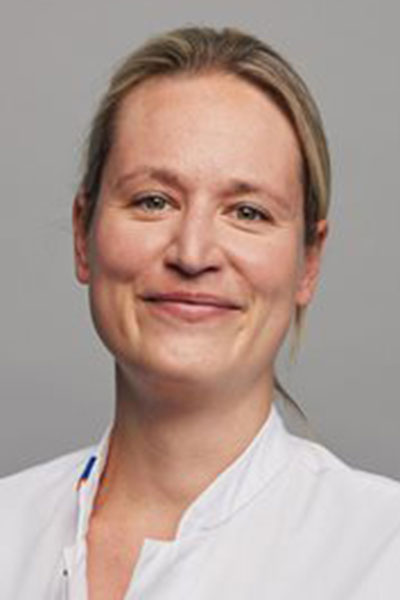
Award Recipient: Linde Morsink, MD, hemato-oncologist with a main interest in allogeneic hematopoietic cell transplantation (alloHCT), University Medical Center Groningen, Groningen, Netherlands
Awards Session: ASTCT Spotlight Session: Best of Transplantation and Cellular Therapy: Selections from JTCT and New Investigator Awards, 1:45 p.m. on Feb. 12, Ballroom A
Lecture Title: Improved Outcome of Allogeneic Transplantation in Older Patients Treated for Myeloid Malignancies Using Post Transplantation Cyclophosphamide and Reduced Duration of Immune Suppression
What was your reaction to finding out you were the recipient of this award?
“I was very happy when I received the news, and I felt very honored to have been selected as the recipient of this award. But next to this, I really appreciate the fact that others in the transplantation field, who I consider very skilled and have great respect for, are open to this new treatment strategy. Before, we mostly experienced skepticism when presenting our ideas and work, so it is very rewarding that things are changing and that maybe more patients can be cured using this transplant approach.”
What will you talk about in your lecture?
“I will explain how we came up with the idea of using post-transplantation cyclophosphamide (PTCy) in combination with a short duration of immune suppression to improve outcomes in older patients diagnosed with myeloid malignancies. Next to this, I will show the audience our experience and results from this treatment approach.”
How did you first become interested in transplantation and cellular and gene therapy?
“Since the beginning of my residency training in internal medicine, I have always been fascinated by the fact we are currently capable of transplanting this whole blood factory and immune system from one person into another and cure even one of the deadliest forms of cancer like acute myeloid and lymphatic leukemia. But apart from the technical part of transplantation medicine, I have always been drawn to the intense and prolonged patient care that is also very much related to these kinds of treatments. I really like the conversations I have with my patients and building a strong treatment relationship to guide them through these often difficult journeys to curation.”
What are you working on next related to this topic?
“I am currently finishing my PhD thesis, which focuses on measurable residual disease (MRD), acute myeloid and lymphocytic leukemia (AML), and alloHCT. The main topic is how to improve the outcome of AML patients in the setting of alloHCT and how to use MRD in this. We know that pre-transplant MRD positivity is related to a higher chance of relapse. I am currently exploring if using PTCy and a short duration of immune suppression might lead to an early graft-versus-leukemia effect without causing serious graft-versus-host disease (GVHD). This way we hope the donor’s immune response can quickly eliminate residual leukemia cells before relapse occurs. Results so far are very promising.”
How do you hope your work influences the field?
“I very much hope colleagues in the field would be open to try this approach and could replicate our findings in larger patient cohorts. Colleagues from Baltimore, like Drs. Leo Luznik and Yvette Kasamon, have previously demonstrated that this approach of a short duration of immune suppression in the setting of PTCy is safe and effective, but so far other transplanters remain hesitant, possibly out of fear for the development of serious GVHD. We and others have not encountered this issue, but if this could be replicated in larger patient cohorts, then this might encourage others to also change their approach on immune suppressive medication in the setting of alloHCT.”
What excites you most about transplantation and cellular and gene therapy today?
“I think, as I mentioned before, the combination of working with very ill patients and treating them with very intense treatment regimens. Every day is different, and you always have to be fully in the game, since there is so much at stake. I really like working in a team and making sure, with all my colleagues who are involved at all different levels, that we provide the best care possible at that very moment for every specific patient. This and the opportunity to constantly develop and grow as a physician are the things that excite me the most about working in this field.”
VIEW TANDEM MEETINGS SESSION RECORDINGS ON DEMAND
Many sessions at the 2025 Tandem Meetings | Transplantation & Cellular Therapy Meetings of ASTCT® and CIBMTR® are available for on-demand viewing for registered participants, both in-person attendees and digital access attendees, following the live presentation. Log into the online program to begin watching.

